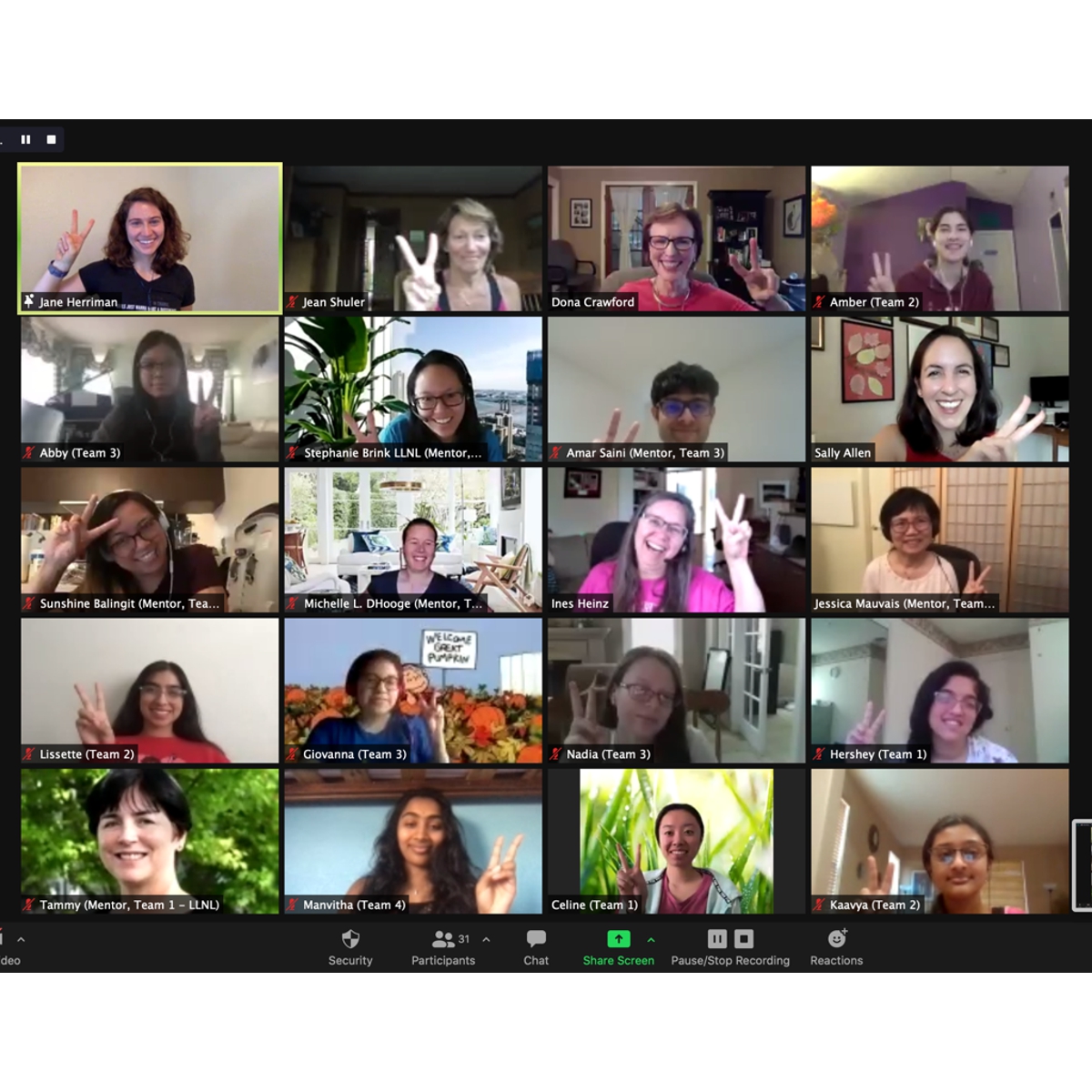The Livermore Lab Foundation Tackles Big Issues
The Livermore Lab Foundation Tackles Big Issues

The Livermore Lab Foundation (LLF) is a 501c3 nonprofit organization dedicated to advancing innovative science and technology and inspiring the next generation of scientists and engineers by leveraging the capabilities and expertise at Lawrence Livermore National Laboratory (LLNL). Its origins date to 2016, when senior leaders at LLNL and the University of California recognized that LLNL’s groundbreaking scientific and technological solutions could be of interest to philanthropists and private foundations for the greater good.
“We leverage the multidisciplinary science and research excellence at LLNL to make a difference on big societal challenges,” says Sally Allen, Executive Director.
Research into Amyotrophic Lateral Sclerosis (ALS) is one focus for the foundation. LLNL scientists and researchers are using physics-based modeling and multi-modal machine learning to identify biomarkers of ALS, also known as Lou Gehrig’s disease. The foundation also has a growing portfolio of grants and foundation investments in the areas of climate resilience and carbon neutrality. For example, LLF was recently awarded a $1 million grant by the Clean and Sustainable Energy Fund for communications and outreach on California’s efforts to achieve carbon neutrality.
LLNL is a leader in this field, according to Allen. The foundation’s work will complement the efforts of the Lab and its groundbreaking report, Getting to Neutral, as well as a new report just issued on California’s regulatory guidelines.
Perhaps surprisingly, one does not need a Ph.D. in order to make a contribution to STEM, according to Allen. “We need the next generation to pursue STEM careers, and that’s why we focus on programs that open the door for more students to enter STEM fields, especially students from diverse and underserved communities. Our STEM programs are largely made possible by individual donors who believe in our mission and appreciate that even a relatively modest gift can make a big difference in the lives of these aspiring young scientists and engineers.”
Last fall, the foundation hosted Girls Who Code – Big!, a four-day virtual immersion program into the world of supercomputing and coding for Tri-Valley area high school students. The foundation partnered with LLNL and the Livermore Valley Joint Unified School District to help STEM-savvy students learn more about high performance computing, scientific visualization, and parallel processing. The highlight was an inspiring career panel with current and former women leaders in STEM.
Last year, LLF also began a new partnership with the University of California at Merced. Its fellowship program provided $15,000 each to two outstanding seniors for tuition assistance. It also underwrote their participation in LLNL’s Data Science Summer Institute and offered access to Lab mentors throughout the academic year. The foundation plans to expand the program in 2021 with fellows interested in carbon capture and storage, and carbon neutrality. LLF is also offering a new internship program with Las Positas College that involves working with LLNL to develop mobile phone-based physics applications aligned with the high school curriculum.
This April, LLF is sponsoring a Rae Dorough Speaker Series talk on risk factors for neurodegenerative diseases, including ALS. The online presentation will be an opportunity to learn more about the role of aging, genetics, and the environment in disease onset and progression. It will also discuss how the Lab is applying machine learning to help discover ALS risk factors and potentially develop treatments. To register for this event, please visit www.livermoreperformingarts.secure.force.com/ticket/#/instances/a0F1Q00000gfi6oUAA.
“We’re in a time like no other,” notes Allen. “Science does matter, and this will be a year of resiliency, relevancy, and reach for our foundation as we create new programs in climate science, open the door for more students to enter STEM fields, and leverage the fundamental science and engineering excellence found at Lawrence Livermore National Laboratory.”
For more information about the Livermore Lab Foundation, please visit www.livermorelabfoundation.org.
To read a copy of Getting to Neutral: Options for Negative Carbon Emissions in California, please visit www-gs.llnl.gov/content/assets/docs/energy/Getting_to_Neutral.pdf.
To read a copy of Permitting Carbon Capture and Storage Projects in California, please visit www-gs.llnl.gov/content/assets/docs/energy/CA_CCS_PermittingReport.pdf.




